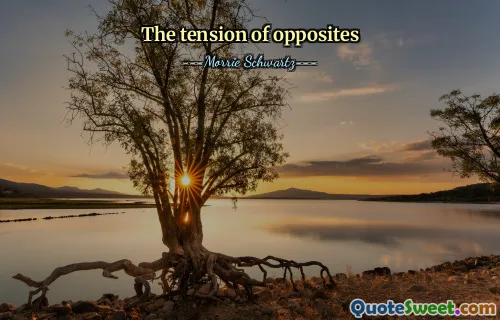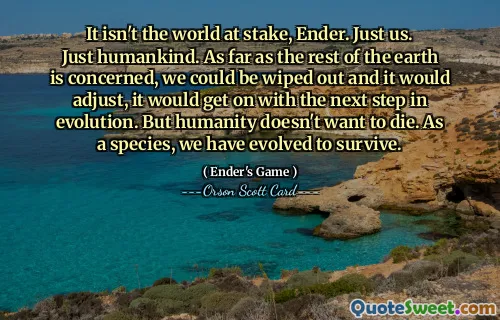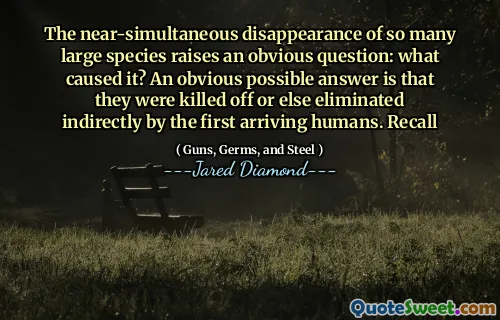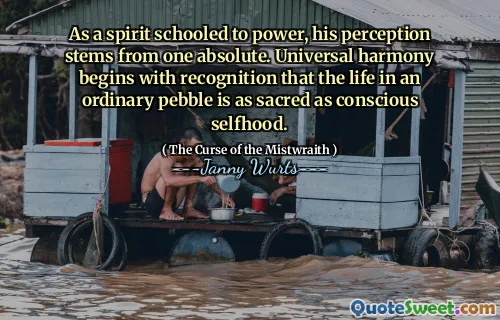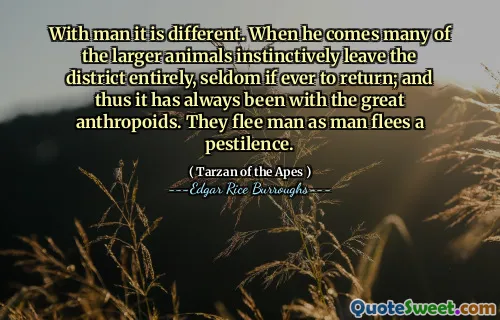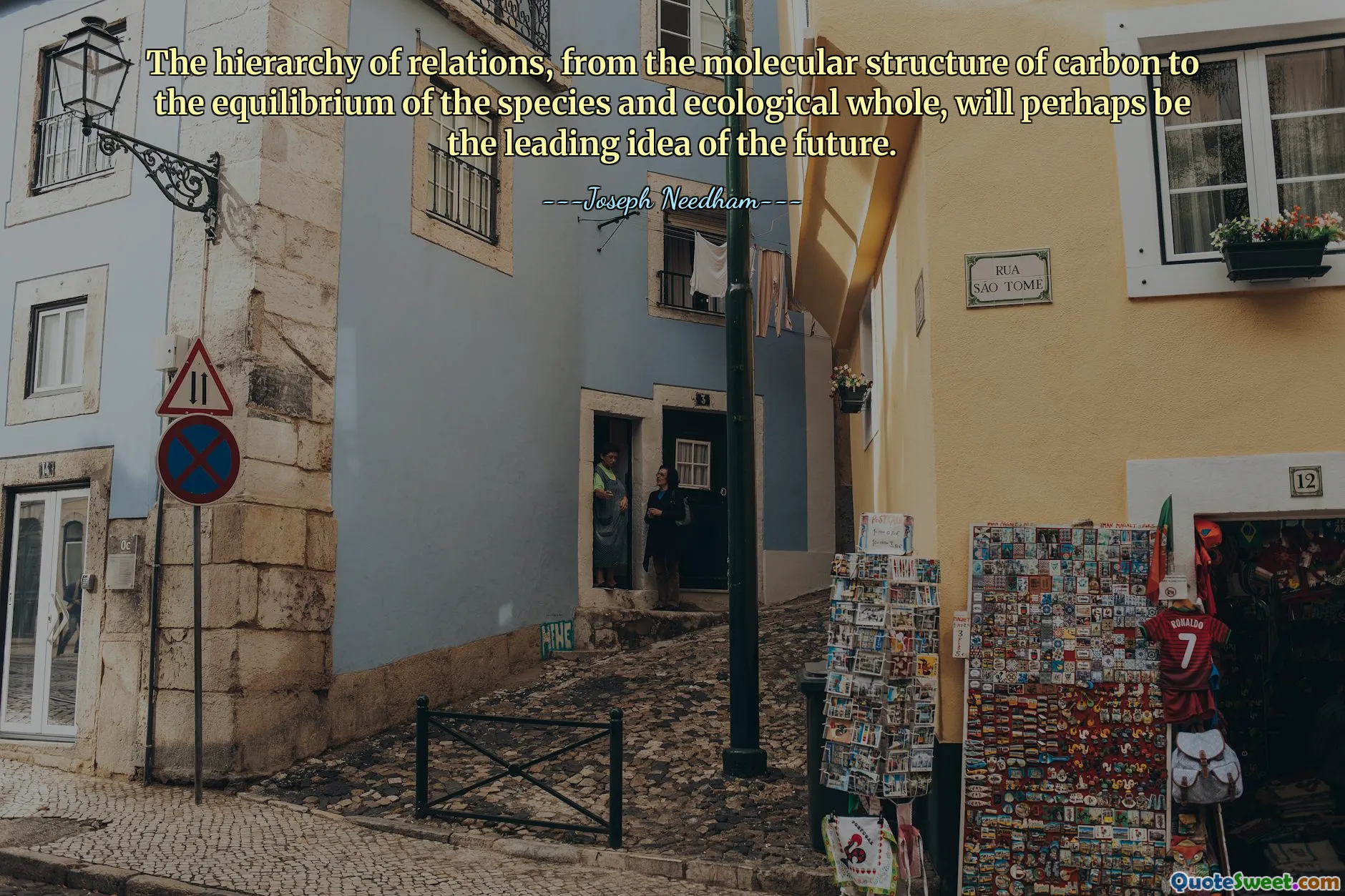
The hierarchy of relations, from the molecular structure of carbon to the equilibrium of the species and ecological whole, will perhaps be the leading idea of the future.
This quote beautifully encapsulates the profound interconnectedness that underpins the natural world. It emphasizes a spectrum of relationships starting at the minute level of carbon's molecular structure extending all the way to the complex ecological balance that sustains entire species. It suggests that future understanding and technological advancement might be guided not merely by isolated study of individual elements but by an integrated viewpoint that appreciates the multilayered interactions between biology, chemistry, and ecology. Such a perspective encourages holistic thinking, which is crucial in addressing the challenges of sustainability and biodiversity conservation. Contemplating nature through this hierarchical lens shifts our appreciation from reductionist approaches toward a more systemic understanding, where even the smallest units like carbon atoms influence and connect to the grand ecological networks. This interconnectedness implies that changes at any level, whether molecular or ecological, can reverberate throughout the whole system, reinforcing the importance of preserving balance and harmony within nature. Joseph Needham's insight invites us to embrace a future where science and philosophy come together to recognize the ecosystems as dynamic hierarchies rather than isolated entities, fostering interdisciplinary research and comprehensive environmental policies. Such an integrated vision offers hope and direction in an era increasingly defined by ecological crises and environmental uncertainty.



